Aug
25
2010
Last week at work we ended up with about 50 or so left over kiwis. (It’s for a project we’re working on, don’t ask – besides, we can’t tell yet anyways.) Needless to say, there was a surplus of leftover fruit. So I nabbed a bag and figured I would do what instinctively came first – try to ferment them into alcohol. So I made up a one gallon batch of beer wort (nothing special, just an ale) and added in 10 sliced up kiwis for the last 5 minutes of the boil, just enough time I figure to sterilize them. Then I let them steep for about an hour before removing them. I have no idea how this is going to turn out. I tasted a bit of the wort and it didn’t taste like kiwis, but it did have hints of the sourness. Because of the sugars in the fruit, the expected ABV on this bad boy is 15%. I didn’t have any yeast that could withstand that amount of alcohol at the time, so it should be more around the 12% mark. It’s been a day since I pitched the yeast, and I have to say I don’t think I’ve ever seen such an active fermentation before – bubbles like crazy. Very curious to how this will turn out.
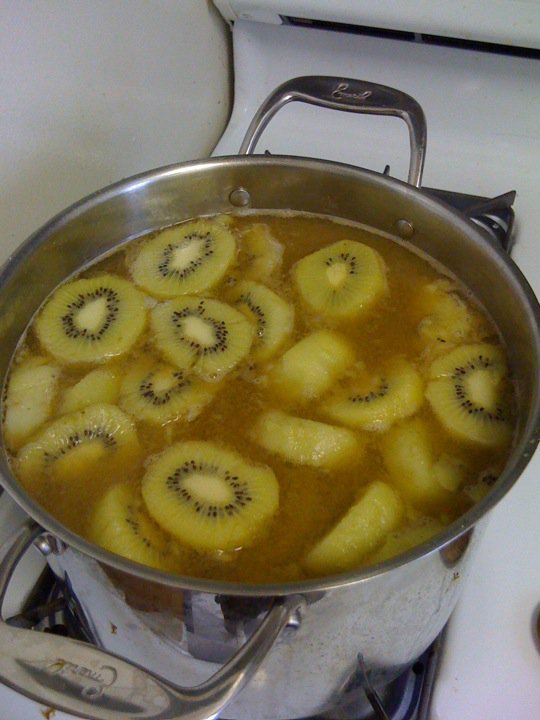
no comments | tags: experiments, fruit, Golden Promise, Homebrew, kiwi | posted in Homebrews
Jun
14
2010
Made another attempt at the smoked beer. I used Golden Promise and Crisp Amber Ale for my grains. I only used a half a cup of the Simpson’s Peated Malt. I chose Argentinian Cascade as my bittering hops, and Chinook and Amarillo for bittering and aroma. I also used some Irish moss this time as it is supposed to help with clarity. I went with the Scottish Ale yeast, and the expected ABV is 6.0%.
Again, I felt that the smoke flavor and aroma was too strong. I am going to really reduce it next batch – I’m thinking even less than 1/8 of a cup. I guess the flavors imparted by peated malt are really strong.
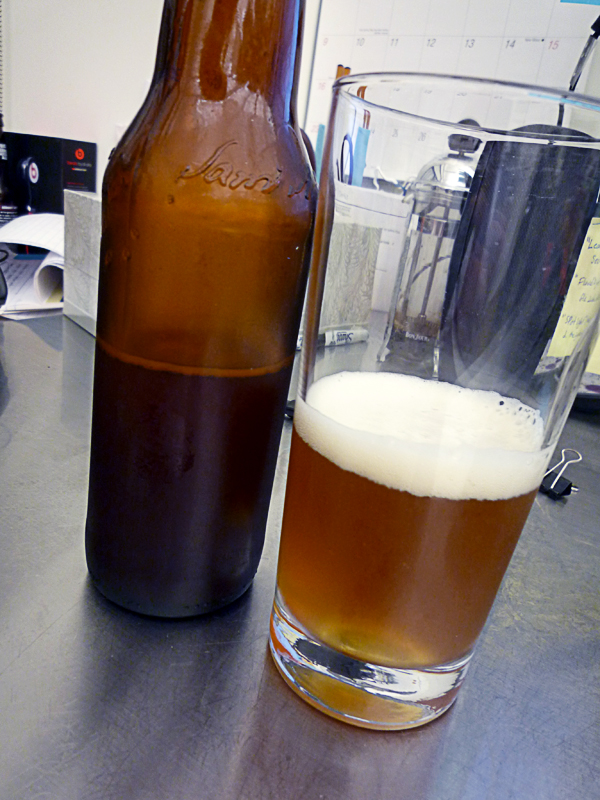
no comments | tags: Amarillo, Amber Malt, Argentinian Cascade, Chinook Hops, Golden Promise, Homebrew, Peated Malt, Rauchbier, Smoked | posted in Homebrews, Singleton Brewing
Jun
14
2010
I was super excited to try making this beer. I’m not sure where the idea to add catnip to my beer came from, but I think it might have something to do with me trying to figure a way to piss off my cats. Since I knew that catnip could be used to make tea, I figured beer wasn’t too large of a leap. In fact, I found out afterward that this wasn’t a totally original idea. Apparently, monks had once used catnip when the price of hops were too great. I didn’t use catnip in place of hops, but rather in addition.
So here’s what I used for this batch. For grains, I used Bohemian Pilsner Malt and Golden Promise, which I’ve been using for almost every batch now. I also used a little bit of flaked wheat. I learned that when using wheat in the mash, I needed to add some extra water and pay more attention to it, stirring it more often. For hops, I choose Chinook and Amarillo, and of course added in some fresh catnip. I made sure to add the catnip towards the end of the boil, but I think next time I would add half at where I did (the 0:40 mark) and then steep the rest right after the boil. Finally, I used a Belgian Strong Ale yeast. The expected ABV for this beer is 7.5%.
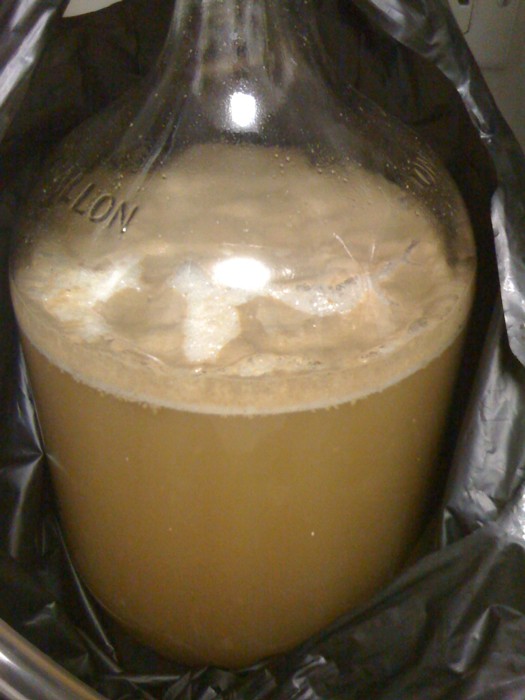
The result is that I am extremely happy with this beer. In fact, this is my best one yet. There’s really no taste of catnip, and next time I am going to add a lot more, but at the same time I don’t want that to be the focus of the beer. The wheat actually seems to add some nice weight, especially paired with the Strong Ale yeast (if it’s not apparent yet I do like heavier ABV beers).
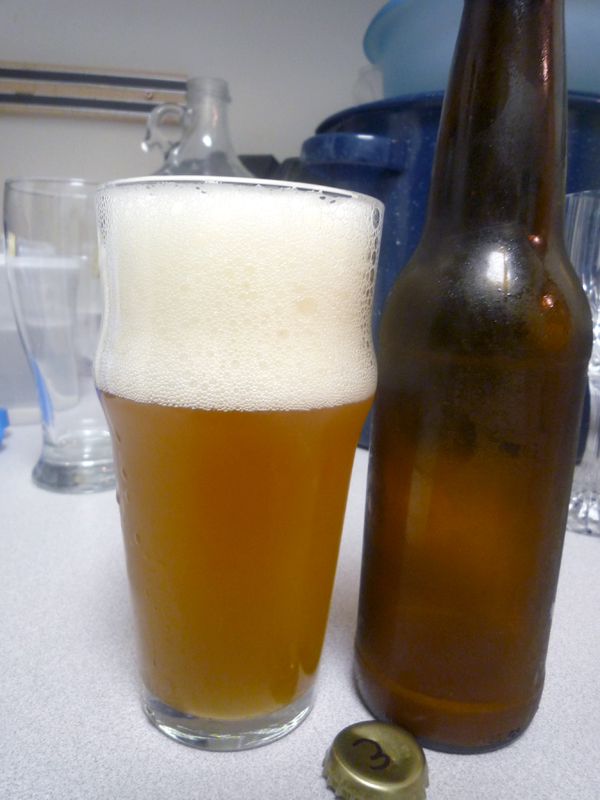
2 comments | tags: Amarillo, Bohemian Pilsner Malt, Catnip, Chinook Hops, Golden Promise, Homebrew, Wheat | posted in Homebrews, Singleton Brewing
Apr
25
2010
For my second beer, I wanted to try something a little different. I wanted to try making a lighter smoked beer, also known as ‘Rauchbier.’ I noticed that Midwest Supplies sold a peated malt, described as: “While the malt is in the kiln, peat moss outside the kiln is gently smoked over slow burning coals, allowing its vapors to drift above the malt.” This sounded intriguing, so I figured I would throw some in.
- 2 parts Simpson’s Golden Promise
- 1 part Crisp Amber Malt
- 1 part Peated Malt
- Chinook Hops
- Amarillo Hops
- Scottish Ale Wyeast W1728
Overall, the beer came out just okay, but better than I was expecting. It a dark amber, slightly cloudy. It also seemed a little off-color, not sure why, maybe it had something to do with the hops. I had an obviously smokey , campfire aroma, mixed in with earthy woody smells. On tasting it, I thought the smokey flavor was a little too powerful. It’s probably good for a smoked beer, but I was trying for something a little less intense. However, underneath the smoke it was a nice, crisp ale. If it weren’t for the smoke, it would be a nice, refreshing brew, and it had a nice hoppy bite to it. The carbonation seemed low, so next time a little more honey before bottling it. I think I will revisit this recipe, both one without any of the peated malt, and one with the amount used either halved or quartered.
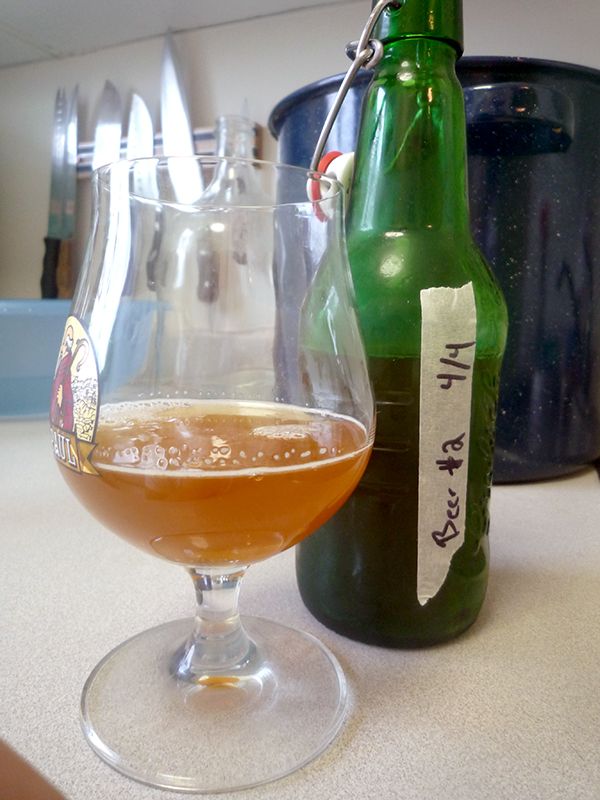
no comments | tags: Chinook Hops, Golden Promise, Homebrew, Peated Malt, Rauchbier, Smoked | posted in Homebrews, Singleton Brewing




